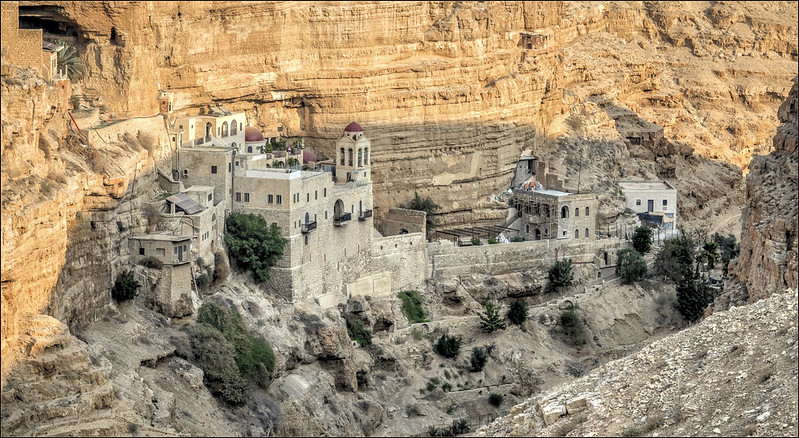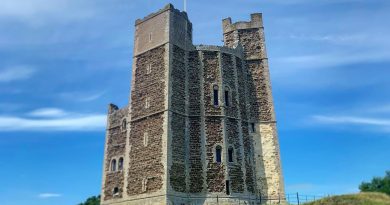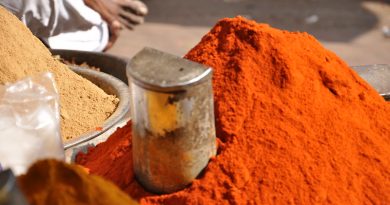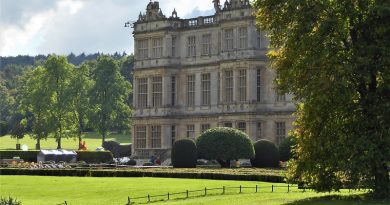The Crusades
The Crusades were military campaigns endorsed by the Latin Roman Catholic Church during the High Middle Ages and Late Middle Ages. Pope Urban II declared the First Crusades with the intended goal of restoring Christian access to holy places in and around Jerusalem. By the end of the 11th century, Western Europe had emerged as a significant power in its own right, though it still lagged far other Mediterranean civilization such as that of the Byzantine Empire and the Islamic empire of the Middle East and North Africa.
In November 1095, Alexius sent representatives to Pope Urban II asking for mercenary troops from the West to help confront the Turkish threat. at the Council of Clermont in southern France, the pope called on Western Christians to take up arms in order to aid the Byzantines and recapture the Holy Land from Muslim control. Pope Urban’s plea met with a remarkable response, both among lower levels of the military elite as well as ordinary citizens. They decided that those who joined the armed pilgrimage would wear a cross as a symbol of the Church.
Several hundred thousand Roman Catholic Christians became crusaders by taking a public vow and receiving complete remission of temporal punishment. The makeup of these crusaders were Christians from all over Western Europe under feudal instead of unified command and the politics were often difficult to the point of intra-faith competition. There were also additional opportunities to take up the cross, such as economic or political gain, a craving for adventure, and the feudal obligations to follow one’s lord into combat. A soldier for Christ was a symbol of complete devotion to God.

Crusade painting, artist and date unknown.
The First Crusades
Additionally, there were six more major crusades and several minor ones. The First Crusade began in 1096 and four separate armies of crusaders were created from troops of a mixture of Western European regions, led by Raymond of Saint-Gilles, Godfrey of Bouillon, Hugh of Vermandois and Bohemond of Taranto. There was also a group known as the “People’s Crusade,” made up of a less organized crew of knights and commoners. The group set out before the others and a popular preacher known as Peter the Hermit was their leader.In the first significant quarrel between the Crusaders and the Muslims, Turkish forces squashed the invading Europeans at Cibotus.
Another group of Crusaders, led by the notorious Count Emicho, carried out a string of massacres of Jews in various towns in the Rhineland in 1096, drawing widespread outrage and causing a major crisis in Jewish-Christian relations. In 1099, 20,000 Crusaders captured Jerusalem, massacring many of its inhabitants in the process. They were to hold the city for almost 100 years.After the First Crusade there was an alternating 200-year struggle for control of the Holy Land, with six more major crusades and multiple insignificant ones. 1291 brought about the failure of the last Christian domination in the Holy Land at Acre.
The Second Crusades
Due to the fact that the crusaders completed their goal before they anticipated, many left for home, while others stayed to govern the territory. The ones who stayed created four large western settlements, otherwise known as Crusader states, in Jerusalem, Edessa, Antioch and Tripoli. The Crusader states maintained the upper hand in the region until approximately 1130, when Muslim forces began gaining ground in their own holy war, often known as jihad, against the Christians. In 1144, the Seljuk general Zangi, governor of Mosul, captured Edessa, leading to the loss of the northernmost Crusader state.
The fall of the County of Edessa the previous year marked the need for more military reinforcements so the Pope, along with many of the Christian rulers, felt a crusade was necessary. Various preachers, such as, Bernard of Clairvaux and South German armies, under the Kings Louis VII and Conrad III, marched to Jerusalem in 1147 but didn’t have any major victories, launching a failed pre-emptive siege on Damascus.
Upon arriving in Constantinople, they planned the impending invasion. They would cross to Anatolia and destroy the Turkish armies that had been recognized the previous year. Their objectives were also to secure the pilgrim pass, recover the County of Edessa and provide reinforcements to Jerusalem, which was in massive danger as most knights had passed away since the First Crusades.There were two big armies led by kings and a few smaller independent armies that were scattered throughout the Mediterranean. Upon reaching Anatolia, both kings were soundly defeated separately giving the Turks a victory they badly needed. The Second Crusade was a failure, despite some success in the Mediterranean namely the acquisition of Lisbon and other small settlements.
The Second Crusade was a failure due to many reasons. First, there was hardly any communication between the two kings. While Conrad marched first to attack Iconium, the Seljuk Turks capital, the French remained behind and attacked another target. This allowed the Turks to quickly march from one place to another without being weighed down. Conrad was defeated and almost killed. The French, on the other hand, lasted longer but they were ultimately routed and their army was almost destroyed.
Furthermore, The Second Crusades had a devastating effect in Europe and was the first real sign of the decay of the Crusaders States in the Middle East. After their defeat, Jerusalem was weakly protected, but this only resulted in the need for the Third Crusade. However, such a humiliating defeat had a negative effect in Europe, which was visible in its economy, lack of recruits and internal chaos. An additional consequence was that Saladin now ruled the Egyptians. He successfully united Syria and Egypt completely surrounding the Crusaders; the main reason of their union was their common enemy, the Christians.

Petra, Jordan. Photo Credit: Jose Javier Martin.
The Third Crusades
In the years between the failure of the Second Crusades and 1170, when the Muslim Prince Saladin came to power in Egypt, the Latin States were on the defensive but were able to sustain themselves. After numerous attempts by the Crusaders of Jerusalem to capture Egypt, Nur al-Din’s forces, led by the general Shirkuh and his nephew, Saladin, seized Cairo in 1169 and forced the Crusader army to evacuate. Shirkuh died shortly after and Saladin took over control and started a series of conquests that accelerated after Nur al-Din’s death in 1174.
Then, in 1187, Saladin began a major operation against the Crusader Kingdom of Jerusalem. His troops nearly destroyed the Christian army at the battle of Hattin, and he took back Jerusalem along with a vast majority of territory. In response to the Church’s call for a new, major Crusade, three Western rulers took on the task to lead their forces in person. These were Richard I, the Lion-Hearted of England, Phillip II of France and Frederick I, called Frederick Barbarossa, the Holy Roman Emperor. These three leaders banded together. In 1189, on their trek to the Holy Land, Frederick Barbarossa died and most of his armies returned to Germany following his death. Phillip II had been urged into taking up the Crusade by a need to match his rivals, but returned home in 1191. On the other hand, Richard, known as a great soldier was very comfortable in his position and saw an opportunity to campaign in the field, establish ties with the local nobility and to be the voice of the Crusader states. Although Richard gained a lot of glory through the capture of the island of Cyprus from the Byzantines in 1191 and then recaptured the city of Acre after a long siege, the Crusaders were unable to recapture Jerusalem or much of the territory of the Latin Kingdom. Richard left the following year after negotiating a treaty with Saladin. The terms allowed for trade for merchants and unarmed pilgrims to make pilgrimages to Jerusalem, while it remained under Muslim control. After the disappointments of the Third Crusade, Western forces would never be able to threaten the real bases of Muslim power. Subsequently, they were only able to gain access to Jerusalem through diplomacy, not arms.
The Fourth Crusades
The Fourth Crusades never reached the Holy Land. Instead, it became a vehicle for the political ambitions of Doge Enrico Dandolo and the German King Philip of Swabia. Dandolo saw an opportunity to expand Venice’s possessions in the near east, while Philip saw the crusade as a chance to restore his exiled nephew, Alexios IV Angelos, to the throne of Byzantium.Pope Innocent III initiated recruitment for the crusade in 1200 with lecturing taking place in France, England and Germany. However, the majority of the efforts were in France. In preparation for this Crusade, the ruler of Venice agreed to transport French and Flemish Crusaders to the Holy Land, but the Crusaders never fought the Muslims. They were unable to pay the Venetians the amount agreed upon so they were forced to bargain with the Venetians.They crusaders agreed to divert the crusade to Constantinople and share what could be looted as payment. As collateral the crusaders seized the Christian city of Zara on November 24, 1202. When Innocent III learned of the expedition, he excommunicated the participants. The crusaders met with minimal resistance in their initial siege of Constantinople, sailing down the Dardanelles and breaching the sea walls. However, Alexios was strangled after a palace coup, robbing them of their success. They had to repeat the siege in April 1204. This time the city was pillaged, churches were destroyed and immense numbers of the citizens were slayed. The crusaders took their rewards, dividing the empire into Latin fiefs and Venetian colonies. The Venetians then persuaded the Crusaders to attack the Byzantine capital of Constantinople, which fell on April 13, 1204. For three days the Crusaders sacked the city. Subsequently the Venetians gained a monopoly on Byzantine trade. The Latin Empire of Constantinople was established, which lasted until the recapture of Constantinople by the Byzantine emperor in 1261. In addition, several new Crusader states sprang up in Greece and along the Black Sea. The Fourth Crusade did not even threaten the Muslim powers. Trade and commerce had triumphed, like Venice hoped, but at the cost of irretrievably widening the rift between the Eastern and Western churches. In addition, several new Crusader states popped up in Greece and along the Black Sea. The Fourth Crusade did not even intimidate the Muslim powers. Trade and commerce had prevailed, as Venice had hoped, but at the cost of irreparably expanding the rift between the Eastern and Western churches.

Espartosa Jacques de Molay Last (23rd), painting by Marius Granet (1777-1849).
The Knights Templar
Around 1118, a French knight named Hugues de Payens created a military order along with eight relatives and acquaintances. He called it the Poor Knights of the Temple of King Solomon, which was later known as the Knights Templar. With the support of Baldwin II, the king of Jerusalem, they set up headquarters on the sacred Temple Mount and pledged to protect Christian visitors to the city.
After facing initial criticism by religious leaders, in 1129 the knights received the formal endorsement of the Catholic Church and support from Bernard of Clairvaux, a prominent abbot. New recruits and lavish donations began pouring in from across Europe.
The Knights Templar were referred to as many different names, including: The Poor Fellow- Soldiers of Christ and of the Temple of Solomon, frequently the Order of Solomon’s Temple or simply Templars. They were among the most wealthy and powerful of the Western Christian military orders and were among the most important actors of the Christian finance. There were three main ranks of the Templars: The noble knights, the non-noble sergeants and the chaplains.
The Roman Catholic Church officially endorsed them in 1129 and the Order became a superior charity through Christendom and grew swiftly in membership and power. The standard uniform for these knights consisted of distinctive white shrouds with a red cross. They were also among the most skilled fighting units of the Crusades. Those members that were non-combatant of the Order, supervised a large economic infrastructure throughout Christendom, creating financial techniques that were an early form of banking and building defenses across Europe and the Holy Land.
In the late 12th century, Muslim soldiers retook Jerusalem and turned the tables of the Crusades, forcing the Knights Templar to relocate multiple times. In the decades that followed, Europeans’ support of military campaigns in the Holy Land began to decline; the Templars’ popularity met the same fate as they clashed with other Christian military orders and participated in a series of fruitless battles. By 1303, the knights had lost their traction in the Muslim world and established a base of operations in Paris. However, the French king Philip IV determined to bring down the order, possibly because the Templars had denied the obliged ruler added loans and expressed interest in forming their own state in southeastern France.
On October 13, 1307, a massive amount of French Templars were arrested along with the order’s grand master, Jacques de Molay. They were charged with a series of offenses ranging from heresy, devil worship and spitting on the cross to homosexuality, fraud and financial corruption,. These men were brutally tortured. Then, In 1310, dozens of Templars were burned at the stake in Paris for retracting their earlier confessions during their trials. Finally, under pressure from Philip, Pope Clement reluctantly dissolved the Knights Templar in 1312. The organization existed for almost two centuries during the Middle Ages.
Saladin
Saladin was born Salah al-Din Yusuf and was known as a great Muslim leader. He was born into a prominent Kurdish family and his father worked for the Turkish governor ‘Imad ad-Din Zangi ibn Aq Sonqur in northern Syria. He spent his youth in Ba’lbek and Damascus, where his main interest was the study of religion instead of military training.
When Saladin was old enough to begin working, he worked with his uncle, Asad ad-Din Shirkuh, who was a key military commander under Nur al-din, the son and heir of Zengi. After Zengi’s death, three military expeditions into Egypt began, all led by Shirkuh, in an attempt to stop the country falling to the Latin Christian rulers of the Kingdom of Jerusalem. The King of Jerusalem, Amalric I, Shirkuh and Shawar, the leader of the Egyptian Fatimid caliph, began a three-way struggle as they fought for control.
in 1163, Saladin climbed the ranks of the Fatimid government by virtue of his military successes against Crusader assaults on its territory and his personal closeness to the caliph al-Adid. When Saladin’s uncle Shirkuh died in 1169, al-Adid appointed Saladin vizier, a rare nomination of a Sunni Muslim to such an important position in the Shia Muslim-led caliphate.
During his term as vizier Saladin began to weaken the Fatimid establishment, and following al-Adid’s death in 1171 he took over the government and realigned the country’s allegiance with the Baghdad-based Abbasid Caliphate. In the following years, he led attacks against the Crusaders in Palestine, ordered the successful conquest of Yemen and avoided pro-Fatimid rebellions in Upper Egypt.
Saladin was now known as the Sultan. He then became the Sole Master of Cairo and the first Ayyubid Sultan of Egypt in 1174. Although he occupied Damascus and other Syrian towns, Egypt continued to be the main base of his operations. Saladin managed to unite and lead the Muslim world and the Christians of western Europe were astounded at his success.

Ancient view of the Citadel
One of the things that Saladin is best known for is the creation of the Cairo military fortress, the Citadel, which he built between 1176-1177, as well the college-mosque, the madrassa, where religion and Islamic law were once again taught to residents. Saladin also ordered up a wall to be built, which enclosed the entire city. His goal was to increase the city’s defenses. Saladin sold off the Fatmids’ treasure to pay his Turkish troops and therefore went from strength to strength in his military efforts.
In 1182 Saladin left Cairo. He went to Syria to fight the crusaders and liberated the immense majority of Palestine from the English, French and other armies as well as from the control of the Pope. Saladin died in Damascus in 1193 and was succeeded by his brother, al Adil.

Saladin Castle. Photo credit: Georges Dahdouh.
Richard The Lionheart
King Richard I, also known as Richard the Lionheart was prompted by Saladin’s capture of Jerusalem in 1187 to join the Third Crusade to regain the Holy Land for the Christians. Richard was born to King Henry II of England on September 8th in 1157 and showed excellence in military skills at an early age. In 1174, Richard and two of his siblings, Henry and Geoffrey, rebelled against their father’s rule over Aquitaine.
After conflicts with his father, Richard formed an alliance with King Philip II of France in 1187 to help in his quest against his brothers and father. Richard released the rights to Normandy and Anjou as part of this alliance and went on to win against his father in July 1189 as a unified front. His father agreed to name Richard as his heir, and he was crowned in September 1189 at Westminster Abbey, after Henry’s death.
The pope, Gregory VII, ordered the Third Crusade after Saladin’s defeat of the King of Jerusalem at the Battle of Hattin, and Richard, who was later given the ‘Coeur de Lion’, the “Lion-hearted,’ title for his heroism, was eager to lead the Crusade. He raised money for the mission by imposing a tax upon all classes and selling off royal lands.

Richard I “Cœur de Lion”, London, April 2008. Photo credit: Jan Kunst.
There was great respect between Richard the Lionheart and Saladin. Saladin made an agreement to send fruit and water to Richard’s men when they requested it in their time of need. Saladin discovered that Richard only had a small army and would have little chance of taking the Holy Land. The two men agreed to a truce, although neither was particularly happy about the outcome, but they were exhausted. This agreement allowed pilgrims from the west to visit Jerusalem without being hassled by the Muslims. Richard sailed for western Europe in October 1192, and never returned to the Holy Land. Unfortunately, Duke Leopold of Austria captured him, who Richard had criticized before. Leopold held Richard captive for two years before a sizeable ransom was paid for him. Richard was finally able to travel home in 1194.
The Death Of Richard The Lionheart
By March of 1199, Richard was involved in a siege of the castle at Chalus-Chabrol. There was a rumor that a treasure had been found on his lands, and Richard was said to have demanded the treasure be given over to him. However, this didn’t happen and instead Richard attacked.
He was killed in 1199 in battle in Northern France’ while trying to expand territory in France on behalf of the English Crown. On the evening of March 26, Richard was shot in the arm by a crossbow bolt while watching the progress of the siege. Although the bolt was removed and the wound was treated, infection could not be prevented and Richard became sick. He kept to his tent and limited visitors to keep the news from getting out, but he knew what was happening. Richard the Lionheart died on April 6, 1199.




